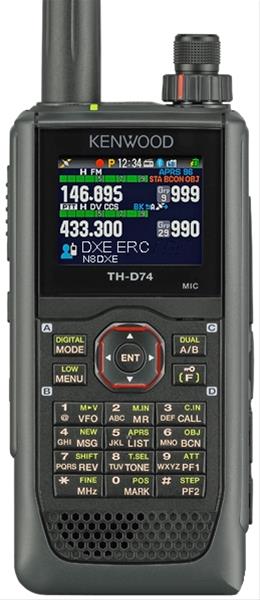arcanicanis on Nostr: I think we can get 128k over HAM radio. There’s like hardly ever any hobbyist ...
I think we can get 128k over HAM radio.
There’s like hardly ever any hobbyist advancement of high-bandwidth data communication in the field of amateur radio equipment. A lot of it’s Disgustingly Proprietary(TM) protocols/software arbitrarily made up by each manufacturer usually going in their own opposite direction, and I think the most I’ve heard of (outside of people modding consumer equipment to operate in ham bands, such as with WRT54GLs long ago) is probably no more than 9600 baud for 2m/440 bands.
D-STAR is marketed as up to 128kbps, but that seems exclusive to just 1.2GHz (‘DD mode’?) band and likely point-to-point with yagis, while 3480 baud is the marketed D-STAR max data bitrate for a Kenwood TH-D74A (~$600, and no longer for sale?).
For perspective of transfer speed, I have an attached JPG of the mentioned radio (29,188 bytes, or 233,504 bits), as well as a smaller AVIF encode at 50% quality (13,560 bytes, or 108,480 bits).
At 3480 baud (bits/sec), that’s half a minute to send the AVIF image (108480/3480=31.17 seconds), or over a minute (233504/3480=67 seconds) for the original JPG.
Digital in amateur radio is pretty much just “buy this Kenwood product, buy this Icom product, buy this Motorola product”. I don’t think I’ve ever heard of folks actually building their own hardware in the past decade to do any high-bandwidth data, it’s all just lazy consumerism.
The sole utility it’s ever going to have is strictly text communication, but at least 3480 baud is a great luxury over acoustic coupling with fldigi (where we’re talking rates like 20 baud for MT63).

https://were.social/media/0952e333c1d5381cde30a1633ceb97d7b9c33824c40c260882a563dba131a082.avif
